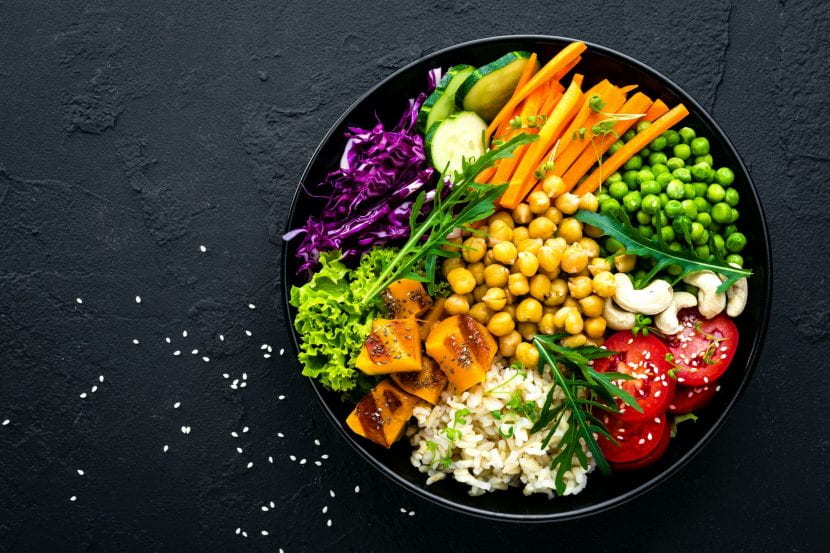Are you having a difficult time finding different ways to incorporate vegetables into your daily meals? You’re not alone! According to the CDC, only 9% of adults meet the intake recommendations for vegetables. Dietary Guidelines generally advise adults to eat 2-3 cups of vegetables every day, but this recommendation varies based on an individual’s age, gender, height, weight, and level of physical activity. Eating vegetables can provide many nutritional benefits and reduce the risk of chronic illness, like heart disease and type 2 diabetes. Today, we will teach you how to use the colors of the rainbow to make more colorful, balanced, and nutritious meals!
Meeting your daily requirements for vegetable intake may be stressful to think about in terms of numbers of cups and calories needed. Adding vegetables to your meals according to the colors of the rainbow allows an easier and more fun method of meeting your daily vegetable intake goal.
Red and Orange
Red and Orange vegetables are high in vitamin A, which is beneficial for eye health.
Red examples: tomatoes, red peppers, chili peppers, radishes, red onions, rhubarb.
Orange examples: carrots, sweet potatoes, yams.
Yellow
Starchy vegetables not only boost your energy levels as healthy sources of carbohydrates, but also contain high levels of B vitamins.
Examples: corn, white potatoes, sweet potatoes, and yams.
Dark Green
Dark green vegetables are high in vitamin K, which is helpful for bone health.
Examples: leafy greens, such as kale, collard greens, spinach, and romaine lettuce.
Purple
Purple vegetables get their color from the antioxidant anthocyanin, which protects against brain diseases, heart disease, and cancer.
Examples: eggplants, beets, purple asparagus, and purple potatoes.
Other
Other vegetables that are not included in the above groups can also be added to your daily diet to increase the diversity of your plate.
For example, bean, peas, and lentils are good sources of plant-based proteins. They also contain healthy fats and fibers. Examples include black beans, black-eyed peas, chickpeas, edamame, kidney beans, lentils, and split peas.
This Cabbage Stir-Fry recipe is an example of a “rainbow bowl” that mixes a different variety of vegetables in one dish. You can pick your favorite vegetables from each of the categories with your favorite proteins and carbohydrates to make your own nutritious meal!
Cabbage Stir-Fry
Prep + cooking time: 30 min
Ingredients:
2 tsp oil
1 cup celery, washed and sliced
1 cup chopped onion
3 cups shredded or chopped cabbage
½ cup chopped green pepper, seeded and chopped
½ tsp salt
¼ tap pepper
1 medium tomato, chopped
Directions:
- Wash hands with soap and water.
- Heat oil in a large skillet over medium-heat (350 degrees in an electric skilled)
- Add celery and onion. Cook 4-7 minutes until soft.
- Add cabbage, green pepper, salt and pepper. Cook for 5-10 minutes, stirring often so the cabbage sweats.
- Add tomato and serve immediately.
- Refrigerate leftovers within 2 hours.
How do you create meals with all the vegetable colors of the rainbow? Share with us by commenting below.


